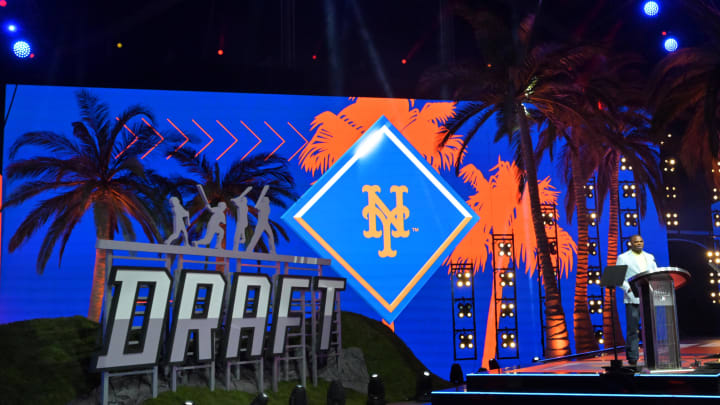Mets’ MLB Draft Strategy Shows Clear Preference For These Types of Prospects

The third and final day of the 2024 MLB Draft is on Tuesday when rounds 11-20 will take place.
The New York Mets selected ten players in the draft’s first two days. And longtime Mets’ radio play-by-play announcer Howie Rose noted New York’s clear draft strategy on X Monday afternoon.
“Interestingly, of the @Mets first ten selections in this year’s draft, nine of them are college players. Less time to wait for their potential major league arrival,” Rose wrote.
Interestingly, of the @Mets first ten selections in this year’s draft, nine of them are college players. Less time to wait for their potential major league arrival.
— Howie Rose (@HowieRose) July 15, 2024
Rose is right. The nine players he’s referencing are Carson Benge (1st round, No. 19 overall, Oklahoma State), Jonathan Santucci (2nd round, Duke), Nate Dohm (3rd round, Mississippi State), Eli Serrano III (4th round, NC State), Corey Collins (6th round, Georgia), Will Watson (7th round, USC (CA), Ryan Lambert (8th round, Oklahoma), Jaxon Jelkin (9th round, Houston), and Brendan Girton (10th round, Oklahoma).
The only non-college Mets' draftee within these ten rounds was Trey Synder, New York’s 4th round pick (No. 144 overall) who was selected out of Missouri's Liberty North High School.
Clearly the Mets’ front office is making a concerted effort to select college players for this year’s draft.
The same can be said for their 2023 MLB Draft. Last year, 17 of New York’s 23 picks came out of college as opposed to high school.
The proof behind this preference is shown through New York's top prospects (Starting pitcher Christian Scott and outfielder Drew Gilbert), both of whom are former college standouts.
There are multiple reasons why loading up on college talent makes sense. One is that, as Rose alluded to in his X post, collegiate players are nearly always more developed both physically and mentally as opposed to high school prospects, and are therefore usually closer to being MLB-ready.
College prospects also have more high-level experience playing against elite competition, which provides a more accurate estimation of their ceiling in the professional game.
Plus college players don’t have the same leverage as high school prospects, who could elect to attend college instead of signing with an MLB team if their offered signing bonus doesn’t meet their desired number.
Many MLB Draft picks coming from college also have additional NCAA eligibility when selected. But potentially returning to the NCAA for one more season doesn't compare to the leverage that a younger player who'd be entering their freshman year has.
In addition to the draft, there is also MLB’s international signing period, where amateur players who live outside of the United States, Canada, and Puerto Rico (and who are at least 16 years old and have not attended high school in an MLB Draft-eligible country within the past calendar year) agree to terms with teams.
Because the majority of international players that sign during this period (which runs from January 15th-December 15th) are typically closer to high school age than college, these signees are often where MLB teams prefer to sign younger, more raw talent, while the MLB Draft is for players who could conceivably appear in the majors just few years after getting drafted.
Therefore, Mets fans can expect to see their team stick with this college-rich draft strategy; selecting players they may see at Citi Field sooner rather than later.
